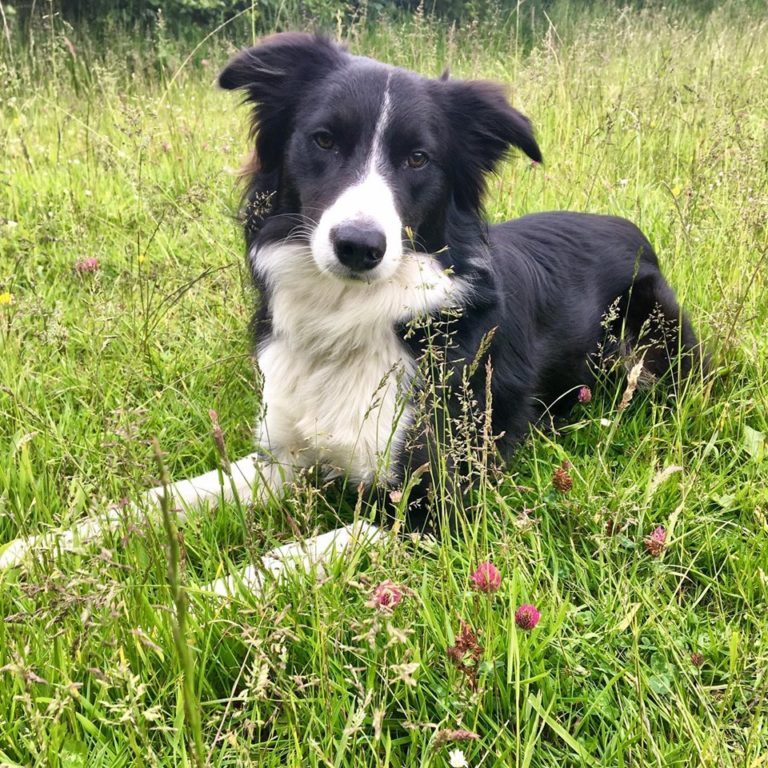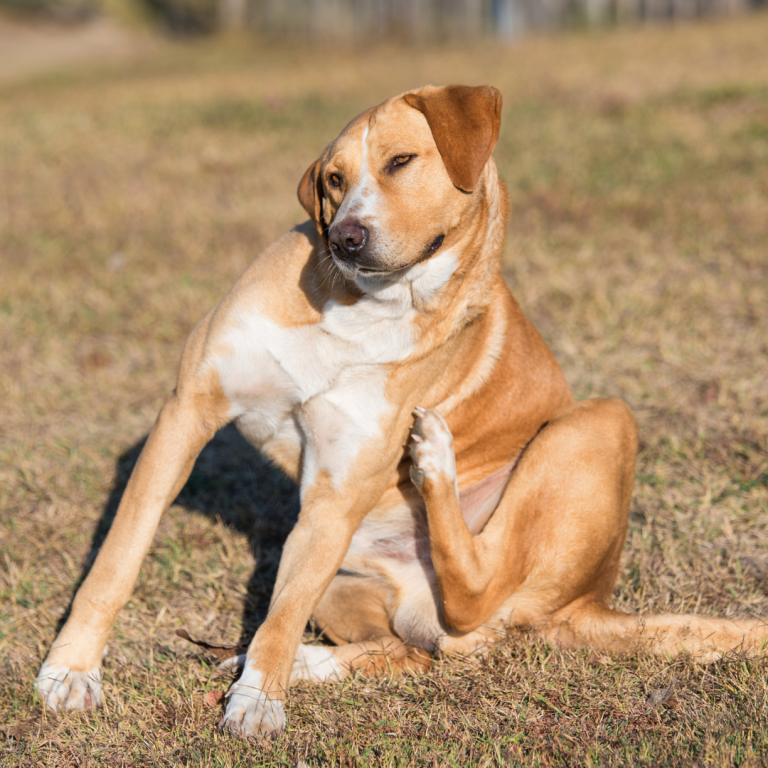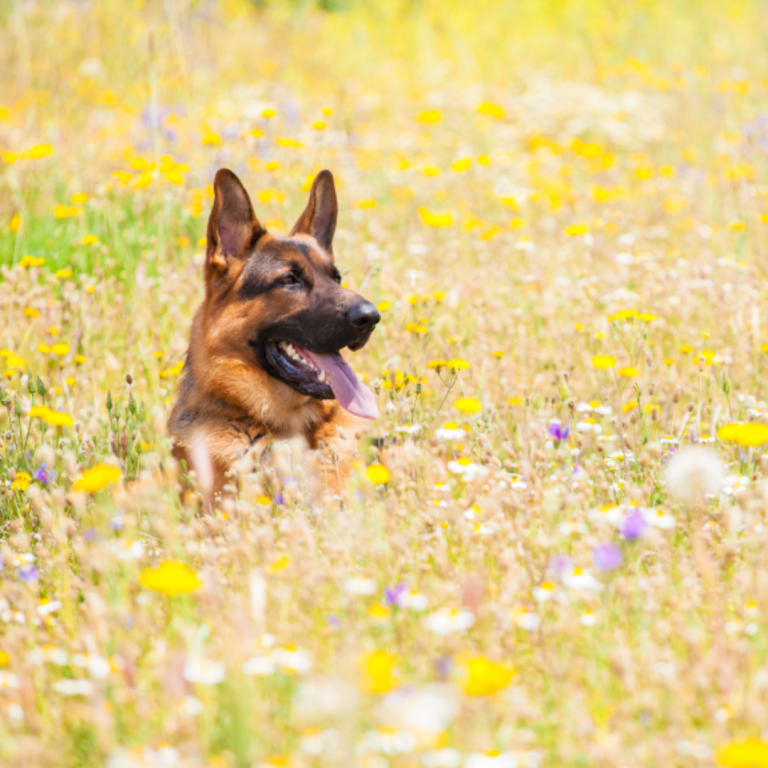
Summer can be a difficult time if your dog suffers from hay fever
If you’ve ever experienced hay fever, you’ll understand just how uncomfortable it can be! Unfortunately for our pets, they can have it too. Hay fever in dogs can be an annoying and unpleasant issue for your canine best friend, interrupting their enjoyment of long summer days.
At Barking Mad Dog Care, the UK’s leading dog sitting service, we decided to take a closer look at the commonly asked question: can dogs get hay fever? In this guide, you’ll also find key hay fever symptoms to look out for in your dog, and what treatments are available to soothe them if they’re suffering.
What is hay fever in dogs?
Dog hay fever is an allergic reaction caused by the body’s response to grass, tree or plant pollen in the air. It is common in the spring and summer and is a type of ‘atopy’ which is due to allergens, such as pollen, penetrating the skin.
Dog hay fever symptoms
Unlike with human hay fever, the main signs of hay fever in dogs is all-over skin irritation where their skin looks flaky, red and sore. However, some or all the following can also occur:
- Watery eyes, which may also be itchy and irritated
- Runny nose
- Frequent sneezing
- Irritated throat
- Lethargy (tiredness)
- A tendency to itch or bite at the skin frequently or rub their face on the floor or furniture
- Sore or bald patches of skin due to excessive itching
- A rash developing on the face or paws

Why do dogs get hay fever?
A dog’s body will release histamines in response to an allergen such as pollen. These histamines are released into the skin causing irritation and itchiness. Sadly it’s not just inhaled pollen that can trigger hay fever in dogs. The histamine response can also be induced by skin contact with pollen, for example when running through a grassy meadow.
When are dogs most susceptible to hay fever?
Hay fever season in the UK typically begins in late March and can last until September, with peaks depending on the type of pollen. Tree pollen is most common from March to May, grass pollen from May to July, and weed pollen tends to appear from June to September. Dogs can be sensitive to these pollen types too, especially grass pollen, which is the most common trigger for allergic reactions
Which dog breeds are at higher risk of hay fever symptoms?
It is important to recognise that some dog breeds are more prone to suffering from hay fever than others. This could be due to facial shape, breathing biology and type of coat. An increased likelihood of developing hay fever is associated with the following dog breeds:
- Poodles
- Dalmatian
- Schnauzers
- Boston terrier
- Irish setter
- Cairn terrier
- Wire-haired terrier
- West Highland white terrier

Hay fever prevention and treatment for dogs
While dog hay fever can’t be cured, there are things you can do to help protect your pooch this pollen season:
- Monitor pollen forecasts daily and keep your dog indoors whenever possible when the pollen count is high (generally on warm and dry days)
- On high-pollen days, wipe or wash your dog down after a walk to remove pollen from their coat
- Avoid drying your dog’s bedding and towels on a clothesline outside when pollen counts are high
- Keep windows and doors shut as much as possible
- Vacuum regularly and dust with a damp cloth
- Buy a pollen filter for the air vents in your car and a vacuum cleaner with a special HEPA filter
- Don’t keep fresh flowers in the house
- Try a regular foot bath to gently clean paws and fur
- Try a new location for walks – a car ride and then a run on the beach could limit exposure to pollen
- Ensure that your lawn is cut short regularly
- – Don’t allow your dog to run through long grass or dense vegetation
What can I give my dog for hay fever?
The first course of action should always be to contact your local veterinary surgeon for advice. They will be able to provide an accurate diagnosis and recommend a suitable course of treatment for your dogs. In some cases the apparent symptoms of pollen sensitivity can be due to other issues such as anxiety or fleas.
Can dogs have hay fever tablets?
Hay fever treatments for dogs can include topical applications such as creams, shampoos and sprays, medication or supplements. Although, prevention is often the best cure and following the above tips can be helpful to try first. Always seek veterinary advice before attempting to administer antihistamine tablets to your dog, as over-the-counter medications can sometimes contain ingredients that aren’t suitable for canines.
Your dog’s health and welfare are our top priority
If your dog has health issues, whether minor or more serious, the thought of leaving them to go on holiday can be very worrying. Barking Mad’s bespoke, dog boarding service is ideal for dogs who may require the administration of medication or tailored care. We are happy to take the time to discuss your dog’s needs. Together with you, we will compile a detailed pet schedule that puts a plan in place for their care, before we consider placing them with one of our experienced host families.
Every dog requires different care, and we will need to make sure that we have suitable host availability for your chosen dates. With this in mind, we would recommend that you don’t leave registering your dog until the last minute. Why not find your local branch and have a chat to them about your dog’s health requirements today? We’d love to meet you and your gorgeous, furry best friend!
Please note: Barking Mad, the UK’s leading home dog boarding provider, assumes no liability for the content of this page. This advice is not a substitute for a proper consultation with a vet and is only intended as a guide. Please contact your local veterinary practice for advice or treatment immediately if you are worried about your pet’s health – even if they are closed, they will always have an out of hours service available.




